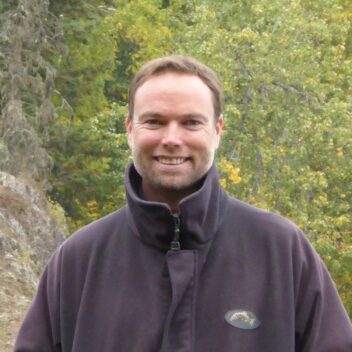Communities can and should get behind responsible development. Our partners at SkeenaWild in northern British Columbia define what responsible mining looks like.
A new SkeenaWild report illustrates how mining can be done responsibly. The report offers guidelines and examples of best mining practices that protect salmon habitat and benefit local communities. That’s especially important in the face of continued development pressure and community pushback in the Skeena watershed, including the Coastal GasLink pipeline and the expanded mining activity in the Skeena watershed and northwest BC’s Transboundary Rivers region. Here’s a Q & A about new practices between WSC’s Ashley Rood and Greg Knox, executive director of SkeenaWild:
This new report is part of an overall effort to define what “responsible development” looks like. This step is critically important and ultimately, part of a radical shift in how you are engaging in the community. Tell me more about how you came up with this approach and how it is being received in your community.
We’ve found that it’s important to be proactive about defining what we’re for. This effort to define responsible development is solutions oriented. We are all too often reactive, reacting to proposals that will threaten our rivers and our communities.

We had industry and our provincial government saying we were opposed to all development and that simply isn’t true – we support development, but it has to be done in a way that protects our values and our communities. Clean air, water, and local benefits are critically important to local people.
Being proactive about defining what we feel responsible mining, forestry and energy development looks like has been very well received by our communities and First Nations. It has provided a space to have a rational solutions-oriented conversation, instead of the divisive yes vs no discussions that dominate traditional and social media.
What are the three main points about the responsible mining report you would want our readers to walk away with?
Recognize that mining is a very important industry and demand will continue to grow in our transition to a renewable energy economy. But it can have huge impacts and needs to be done right. There are lots of solutions to improving mining practices — underground mining, backfilling waste and dewatering tailings are some key ways impacts from mining can be dramatically reduced.
There are lots of solutions to improving mining practices – underground mining, backfilling waste and dewatering tailings are some key ways impacts from mining can be dramatically reduced.
These best practices are being used by mining companies all around the world and here in NW BC. We have examples of mines right here in the region that are utilizing best practices, minimizing impacts and risks to our water and salmon and providing substantial local benefits.
Two pieces of community engagement really stood out: the emphasis on “Free, Prior, and Informed Consent” and the emphasis on local employment and local procurement of goods and services. Can you talk a bit more about community engagement?
Free, prior, and informed consent is a key piece of the United Nations Declaration on the Rights of Indigenous Peoples. It states that impacted indigenous communities should be provided with good unbiased information on potential impacts of development on their community.
Local communities should have real opportunities in decision making at the front end, before mines are designed. Right now, mining companies come in with the full development already drawn out. That usually means the lowest cost proposal with the highest risk to fish, wildlife and local communities.
It’s imperative to maximize benefits to local communities. If you hire local and buy local, benefits will be amplified throughout the community.
What’s the next step with the report?
A change in mining practices will come from communities. This report will help communities be better able to push companies to implement best practices. Right now, we’re faced with these proposed mines with massive toxic tailings that would leave our communities living with a legacy of risk.
Any last words?
You mentioned that this report, is radical, and it really shouldn’t be. The conservation community has to get better at defining solutions. Without this, it is all too easy to be marginalized.
To learn more about this new report check out SkeenaWild’s press release here.
And don’t miss SkeenaWild’s new series of videos (below) of successful responsible entrepreneurs in the Skeena.
